Last updated on February 15, 2024
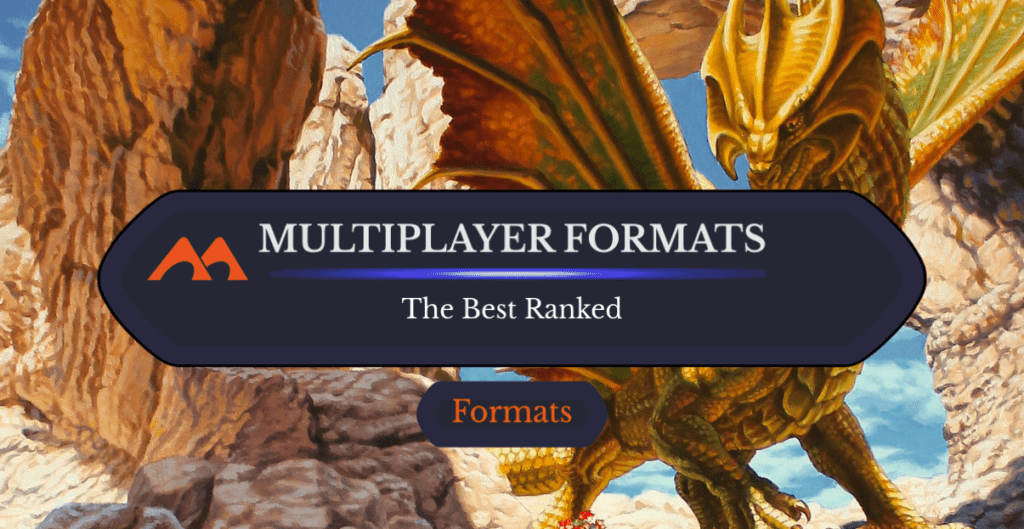
Ancient Brass Dragon | Illustration by Raoul Vitale
Magic: The Gathering is designed to be played as a one-versus-one duel game, traditionally. However, that hasn’t stopped players and designers from creating dozens of ways to graft the rules onto a multiplayer format.
For those of us lucky enough to have a large enough (and Magic-inclined) friend group, getting together for game night can be a pain – we’ve played enough 5-player Commander for a lifetime, so what are we supposed to do with five players at a table? We look to the alternative multiplayer formats!
Come along with me as we ascend to a world where everyone can make it to game night and we have to figure out what format we’re playing, and quick!
What Is a Multiplayer Format?

Sliver Queen, Brood Mother | Illustration by rk post
MTG Multiplayer formats are any set of rules that support three or more players. They could have additional rules to add a layer of politics or mechanical complexity to the game, or they could simply be rules for “smoothing over” the various ways older cards conflict. Some even add entirely new cards to the game in the form of the oversized Planes and Schemes.
#17. Vanguard
If you’re looking for a little extra spice for your multiplayer games, the Vanguard oversized cards make for great fun.
Vanguard was a sort of proto-Commander, where your deck was either built around one of the specific oversized Vanguard cards, or players were randomly assigned a Vanguard at the beginning of the game.
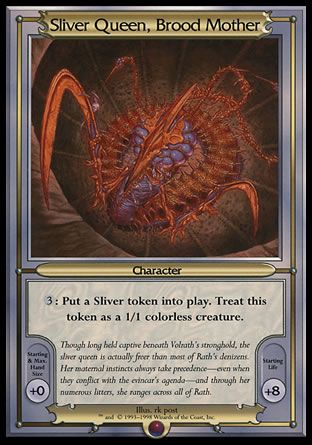
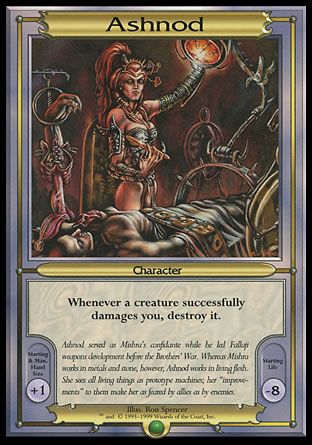
Each Vanguard modifies your starting life total and starting hand size, in addition to providing an additional effect. Many of the Vanguard cards have powerful abilities, like Sliver Queen, Brood Mother’s 3-mana sliver token generation, or Ashnod’s free No Mercy.
Vanguard works best when stapled onto a typical free-for-all game with Vanguard randomly determined. You could challenge your friends to build the best decks they could around a particular Vanguard, but the power level disparities will be shocking.
#16. Star
Star, sometimes called Pentagram and Five Point, is a 5-player Magic: The Gathering format where each player plays a different mono-colored deck, with one from each of the five colors represented. Players build decks using only spells of that color and lands that can’t produce a different color of mana.
Players sit in a circle organized by the color of their decks and corresponding Magic's color wheel, the five points on the back of every Magic card. Starting player is determined randomly, and play progresses clockwise. A player wins when their two enemy colors (the players seated opposite them) are defeated. This means there are occasions when two players can be the victor. For example, if the green, red, and black players are all defeated, then white and blue are victorious.
Star games are quicker than typical free-for-all matches on average since you only have to defeat two players to win.
Variants for Star include options for deck building; allied color pairs could be the basis for deck building, or your group might choose to do away with the color restrictions entirely.
#15. Chaos Magic
Chaos Magic is the proto-Planechase format. It’s a variant of the Free-For-All rules where players create a 20-30 card Chaos Deck. The player who goes first is designated the Chaos player; before that player untaps at the beginning of their turn, that player flips a card from the Chaos Deck face up on the table. That card is considered “in effect” until the Chaos player flips a different card after a full series of turns. The active Chaos card isn't in play and can't be affected by spells or abilities. Any player may use any abilities granted by the card, or, if it has a specific effect, each player immediately resolves the effect.
Chaos Magic works best when you seriously consider the cards to include in the titular Chaos Deck. Symmetrical effects like Oath of Lieges can emulate the effects of a plane card, while Howling Mine speeds up the entire table’s game plan. Letting you choose the exact effects you want in your pseudo-planar deck opens this multiplayer format to a wide array of possibilities.
#14. Grand Melee
Grand Melee is the format for that inseparable group of 10 friends that can’t stand not to play Magic with everyone involved. Grand Melee was designed as a variant of free-for-all scaled up to 10 players. It functions basically the same, except it uses the range of influence rules. A player’s range of influence is defined by a number, and is usually set to one, meaning they can only interact with the players to their immediate left and right. You could scale up the range of influence, like in Emperor, but the point of the limited range of influence is to allow multiple players to take their turns simultaneously. It’s physically impossible for you to interact with the other end of the table, so it's safe for those players to take their turns as you take yours.
Use “turn markers” (either a coin, miniature, special token, or whatever) each with a number to keep track of who is taking their turns. When a player ends their turn, that player passes the turn marker to the player on their left. A player can't receive a turn marker if the player three seats to their left already has one. If this is the case, the player who would receive it must wait until the player four seats to their left takes the other turn marker. This is to prevent clumping the turn markers together and keep the pace of the game flowing.
Grand Melee can scale up easily to however many players you need; you’ll just need to increase the number of turn markers to ensure enough people are playing at once. A good rule of thumb is one turn marker for every four players in the game.
#13. Reject Rare Draft
Anyone who’s built their own cube for drafting knows how hard it is to get your friends to play it with you. The most common complaint I hear is players don’t want to learn the meta for an environment you created. Reject Rare Drafts answer that by putting the onus back on the rest of the players!
For a Reject Rare Draft, two to eight players each donate 45 of their useless rares to a communal card pool, which is then shuffled and dealt into 15 card “packs.” Then, players draft these packs as usual; creating a unique card pool with a draft environment they’re guaranteed never to see anywhere else!
Reject Rare Draft really speaks to my soul as a home for all those garbage rares I have floating around in my box. The games will undoubtedly play slow, with players racing to hit whatever 8-mana fatty they pulled years ago during a Theros draft.
#12. Conspiracy Draft
When WotC rolled out the Conspiracy sets, reception was mixed. Here were all these fun multiplayer cards, built specifically for drafting, that would then become useless after our draft had ended.
Conspiracy Draft refers to the multiplayer draft format played with the Conspiracy and Conspiracy: Take the Crown sets where cards have effects that trigger when they’re drafted. Conspiracy cards could be hidden agendas (cards revealed during a game) or effects that were constantly in play, like Power Play.
Conspiracy boxes are best drafted with eight players who then break off into 3- to 5-player pods for multiplayer matches. Everyone starts at 20 life.
The conspiracy cards added a fun dimension to the typical draft experience and added some very exciting mechanics like voting and the monarch to Magic, but its staying power as a format was directly related to how hard it is to find an unopened box.
#11. Judge’s Tower
Judge’s Tower is the true patrician Magic format. The general principle of Judge’s Tower is you must take any action as soon as possible. In Judge’s Tower, players share a 175- or 250-card library, start with 0 cards in hand, start with 20 life that resets every turn, and don’t lose for having 0 or less life. Instead, a player loses the round when they commit a rules violation. The round’s winner gets a point, and then the deck is reshuffled and another round commences.
Players have infinite mana and must activate any activated abilities they control once per turn. Optional modes are mandatory to the extent that you can fulfill them. The X cost of any spell is always equal to 3, and players must attack and block with all legal creatures every turn.
Judge’s Tower is an extreme form of Magic that you can play to test the rules knowledge of your pod. It also makes a great training tool for prospective judges!
#10. Wizard’s Tower
Wizard’s Tower is a variant draft format where players combine their draft packs into one large, shared library to play from. Two to five players combine the contents of nine booster packs with 16 of each basic land to form a massive deck (the “tower”). After randomly determining who goes first, each player starts with a 3-card hand. Players may discard cards from their hand and draw a new one as many times as they wish; repeat this until everyone keeps their hand. Shuffle the discarded cards and place them on the bottom of the library, then reveal seven cards from the top and place them face up on the table. These are the cards in the courtyard.
At the beginning of your turn, you choose one of the courtyard cards and add it to your hand before drawing a card from the top of the tower. If there are no more cards in the courtyard, reveal seven more and choose one from among them.
From here, gameplay progresses normally, using the free-for-all rules for simplicity’s sake.
Wizard’s Tower is best for a group that isn’t interested in traditional drafts but still wants to immerse themselves in a new set together.
#9. Horde
Horde is a cooperative format where players work together to defeat an automated deck. To play, players construct a 100-card Horde deck – 60 of these cards should be tokens, and the rest regular Magic spells. The horde deck should avoid cards that force it to make choices since it needs to run itself as smoothly as possible.
The horde deck has no player. It has infinite mana and pilots itself. It plays itself by revealing cards from the top of its library until a non-token card is revealed. Then, all the revealed cards are cast, first the tokens, then the revealed card. The horde then casts any cards it can from its graveyard or hand. All creatures it controls have haste and attack each turn if able. The horde deck doesn’t have a life total, and instead mills cards from the top of its library for each life lost.
The human players are known as survivors. The survivors can have any number of players, but two to three seem to be the sweet spot. Each survivor contributes 20 life to the team’s total, and they all act at the same time like in Two-Headed Giant. The survivors get three turns to prepare before the horde deck gets to take its first turn.
Horde has a suggested ban list of “auto-win” cards you can find here.
Horde is a great format for you to dump a ton of tokens and your draft chaff into, and variant rules allow you to adjust the difficulty of defeating the horde deck up or down.
#8. Assassin
Assassin is a political multiplayer format for four or more players where players are each assigned a secret target – another player that they must defeat to win.
“Marks” are determined randomly. Defeating another player grants you their “mark,” giving you another target until the end of the game. The player who defeated the most marks wins!
Assassin developed out of a need to shorten the game length of free-for-all games, where the politics of “why are you attacking me?” tended to make games drag on. In Assassin, you’re guaranteed a target that you need to take out, giving you a definite goal for the session, and preventing waffling on targets.
Variants exist for Assassin where new roles are added or rewards for destroying your mark. One variant includes the “thug” role, acquired by any player who was randomly assigned themselves as their target, and another lets an assassin draw a card and gain 3 life when their target is defeated.
#7. DC10/Type 4
DC10/Type 4 is a nearly forgotten format similar to Cube where players draft decks from a predetermined card pool. The catch is that there are no lands in the card pool – instead, players are considered to have infinite mana of all five colors but are limited to one spell per turn. Because of this, DC10/Type 4 has become known for its haymaker spells and big, flashy creatures.
The card pool requires a bit of consideration beyond just the stack of cards you have around. Because of the nature of the format, Type 4 stacks tend to avoid any X-cost spells. With infinite mana, every Fireball becomes a game-ender.
Players can also activate the abilities of permanents they control infinitely if they can meet its non-mana activation costs. When two abilities that could be activated infinitely conflict, the defensive ability takes precedence. The typical example is Crowd Favorites attempting to tap Azorius Guildmage, which uses its second ability to counter it. In this case the “defensive” ability wins out and counters Crowd Favorites’s activated ability.
Players start the game with 20 life, but variant starting life totals exist. Players also typically draft their own separate decks, but a Type 4 can be played using a huge shared library, as well.
#6. Planechase
Planechase is an officially supported multiplayer format that uses the oversized plane cards. Planechase was originally designed to be played with 60-card Constructed decks, but the most recent Planechase iteration was alongside the March of the Machine commander decks and the Doctor Who commander decks.
Planechase uses a planar deck, a stack of the oversized plane cards that can be a shared pile, or individual stacks for each player. Players begin the game normally, then reveal the top card of the planar deck. This is the first plane players have planeswalked to. The game progresses normally, with the additional rule that players may roll the planar die anytime they could cast a sorcery. Rolling the six-sided planar die can have one of three outcomes: either the players planeswalk to the next plane, chaos ensues, or nothing happens. Players get one free roll of the die per turn, but each additional roll costs generic mana equal to the number of times the die has been rolled this turn (the second time costs 1, the third time costs 2, etc.).
The plane cards each have two effects thematic to the locale they represent. The first ability is a static effect that remains in play for as long as the players are on that plane, and the second is an ability that triggers whenever a player rolls “chaos” on the special planar die. For example, while Feeding Grounds is in play, green and red spells cost 1 less to cast. My blue-black mill deck can’t make use of that, so I roll the planar die to try to take us away from this plane. Instead, I roll the chaos symbol, triggering Feeding Grounds’s second effect, and I get to put a +1/+1 counter on my Kraken Hatchling.
Planechase adds a level of randomness to the typical multiplayer game that you just can’t emulate anywhere else. The plane cards work with any format you can slap them onto, and March of the Machine and Doctor Who gave us a host of new cards that interact with the planes specifically. Expect to see more support for this format as Wizards expands into the casual sphere.
#5. Archenemy
Archenemy is an officially supported multiplayer format typically played with four players. One player is chosen to be the Archenemy, and the others act as a team to defeat them. The Archenemy starts the game with 40 life and has access to a Scheme deck – a deck of oversized cards with powerful effects. At the beginning of each of their precombat main phases, the Archenemy reveals the top card of the Scheme deck and plays it. Most have triggered abilities that resolve as they enter the battlefield, but some have continuous effects. Once they’ve been resolved, the scheme cards are returned to the bottom of the scheme deck.
The opposing team takes a simultaneous turn, like in Two-Headed Giant, but tracks separate life totals starting at 20. Any teammate can block an attacker declared by the Archenemy, even if they aren’t the one being attacked. The Archenemy wins when all three of their opponents are defeated, and the other players win when the Archenemy is defeated.
Archenemy is the definitive “one vs many” MTG format. It uses the scheme cards to balance the game when you have more opponents than the other players, which makes for some exciting games as players try to deal with the archenemy’s villainous powers.
Archenemy can scale up to include more than four players, but the balance starts to get a little wonky when you try to balance out five players and two archenemies. Archenemy can be played in a “supervillain rumble” mode, though, where each player uses a scheme deck and starts with 40 life. Of course, you can play this with your Commander decks, too.
#4. Free-for-All
Free-for-All has gone by many names in the past, but the general concept has been the same forever. In a Free-for-All game, three to five players construct traditional 60-card decks and sit randomly around a table. Players then agree to how attacking works: Players can choose to only attack left, only attack right, or attack multiple players. This Pramikon, Sky Rampart-esque ability helps mitigate the number of threats a player must deal with. Turns progress one player at a time in a clockwise rotation, with each player acting as their own separate team. A player wins when all their opponents have been defeated, or something like Near-Death Experience says so.
The free-for-all rules can be used with any deck-building restrictions, so they can be applied to games of Commander, the actual product Game Night: Free for All, or group drafts as well.
#3. Emperor
Emperor is a multiplayer format for six or more players. In a game of Emperor, players are separated into two teams of three. Each team chooses a player to be their Emperor; the other two players become Lieutenants (or “knights” or “bodyguards” or whatever your group called them growing up).
Teams then sit on opposite sides of the table, three to a side with each team’s Emperor seated between their lieutenants. The first turn is determined randomly, and then players begin. Each player operates independently (unlike Two-Headed Giant, where teams share a turn), but players may share information and discuss strategy with their team.
This format uses the “range of influence” rule: A player with a range of influence of 1 can only attack and interact with the players seated immediately next to them. This means at least one of an Emperor’s lieutenants must be defeated before the Emperor can be attacked. However, both Emperors have a range of 2, meaning they can attack players up to two seats away.
A team wins when the opposing Emperor is defeated, even if one or both of their lieutenants have already lost.
Emperor can be played with traditional Constructed decks and 20 life starting totals or can be overlaid onto any other format easily. It can be scaled up to include more teams, in which case the Free-for-all rules are applied across the teams.
Emperor is my favorite multiplayer format. It takes a bit of setup, and quite a bit of buy-in from the players, but once it gets going there’s really nothing like it. I’d encourage your group to even try building specific decks for Emperor games!
#2. Two-Headed Giant
Two-Headed Giant is the ultimate 2v2 format for Magic. Two teams of two players face off in a single game. Each player uses their own deck, and each team shares a life total of 30.
With the exception of life totals and poison counters, the players on a team don’t share resources. They may share information by reviewing each others’ hands and discussing strategy, but they can’t share mana or draw from each other’s libraries or anything like that. Teams act as a single player on their turns, moving through steps as phases together.
Two-Headed Giant teams are attacked as a single player, so any of the defending team’s creatures may block for them.
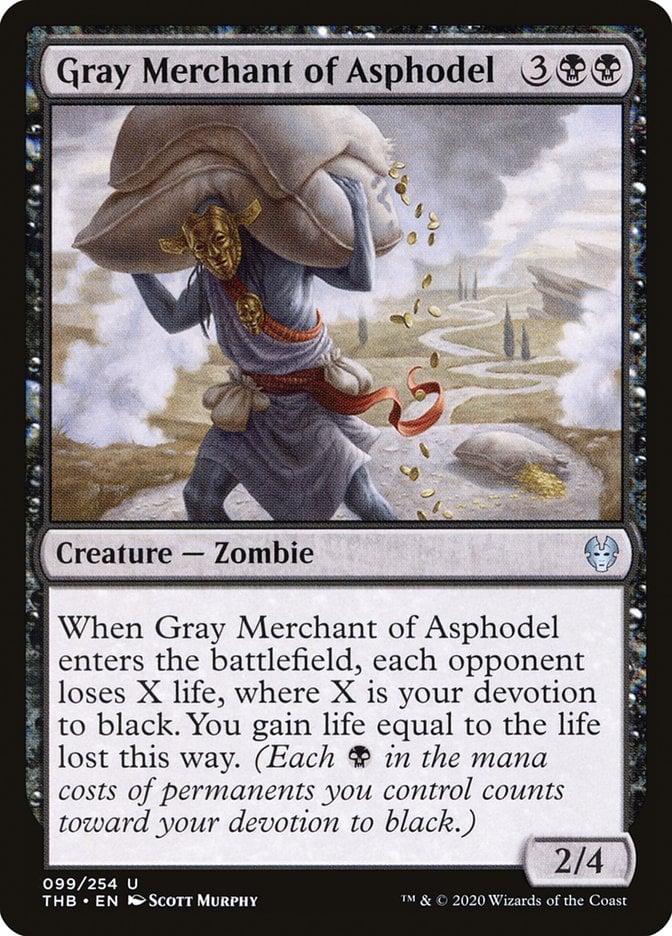
Two-Headed Giant is tricky because some effects state something happens to “each player” or “each opponent.” In 2HG games, each player is affected separately by abilities like Gray Merchant of Asphodel, so an affected team would lose two times X life.
The advantage to Two-Headed Giant is you can get through a game with four players in about the same time it’ll take you to play a one-on-one match. Two teams passing the turn back and forth always play quicker than four players sitting around a table humming and hawing over whether or not they should cast their Commander this turn.
Two-Headed Giant can be scaled up for more players, too. If you find yourself looking eight Commander players in the face and only one table available, why not shoot for the 2v2v2v2 matchup? (If you do this, please stream it as I imagine it’ll take twelve hours to finish).
#1. Commander/EDH
Commander is by far the most popular multiplayer format in Magic. What started as a goofy way to find a home for all those garbage rares in your collection has become the most popular Magic format, period. It can be played one-on-one, but it’s best enjoyed in pods of three to four players. Commander games can support upwards of four players, but the game slows down exponentially as the total number of turns climbs.
In Commander, players build a 100-card singleton deck, meaning they can only include one of each non-basic card. Their deck must be built around a legendary creature they choose as their commander, and the deck can’t include any colors outside their commander’s color identity.
Players start with 40 life each, and their commander always starts the game outside the game in the “command zone.” Players can always cast their commander from their command zone, and may return it there whenever it would change zones (when it dies, is exiled, returns to your hand, shuffles into your library, etc.), with the caveat that your commander costs 2 extra mana to cast for each time its been returned to the command zone.
Commander has been receiving official support since 2011, and preconstructed Commander decks are released on an at least yearly basis. It’s unquestionably the most played multiplayer format, and probably the most-played Magic format. It’s not surprising why, either. The advantages to being a Commander main are numerous: For one, the singleton format means you don’t have to buy multiple copies of those expensive rares. As a casual format, there’s much less focus on building a competitive deck and more focus on playing the cards that you love. Commander’s ban list also prevents various abusive and “un-fun” strategies from being exploited. Finally, the sheer volume of preconstructed Commander decks released each year makes it the new entry format for amateur players, meaning you’ll be hard-up trying to find anyone without a Commander deck lying around.
Sub-formats of Commander/EDH include cEDH, the competitive alternative, and Duel Commander for one-on-one, each with their own ban lists. Commander decks can be shoved into almost any other multiplayer format, as well, making it one of the most adaptable deck-building formats to boot.
Wrap Up

Atraxa, Grand Unifier | Illustration by Marta Nael
| Format | Deck Size | # of Players | Competitive Level |
|---|---|---|---|
| Vanguard | 60+ | 2+ | Casual |
| Star | 60+ | 5 | Casual |
| Chaos Magic | 60+ (plus 20-30 card Chaos Deck) | 2+ | Casual |
| Grand Melee | 60+ | 5+ | Casual |
| Reject Rare Draft | 40 | 4+ | Casual |
| Conspiracy Draft | 40 | 4+ | Casual |
| Judge’s Tower | 175 or 250 | 2+ | Competitive |
| Wizard’s Tower | 215 (9 draft packs + 16 of each basic) | 4+ | Casual |
| Horde | 60+, 100 card Horde Deck | 1+ | Casual |
| Assassin | 60+ | 4+ | Casual |
| DC10/Type 4 | 40+ | 4+ | Casual |
| Planechase | 60+ | 2+ | Casual |
| Archenemy | 60+ | 4+ | Casual |
| Free-for-All | 40+ | 3+ | Casual |
| Emperor | 60+ | 6+ | Casual |
| Two-Headed Giant | 60+ | 4+ | Casual, occasionally competitive |
| Commander/EDH | 100 | 3+ | Casual |
This list barely scratches the surface on multiplayer Magic formats. We haven’t even covered the Bang! adaptation or its subformat, Throne Magic. We could spend thirty years pouring over the last thirty years of InQuest magazine archives and by the time we were done, thirty more multiplayer formats would’ve been invented and forgotten about.
What are your favorite multiplayer formats? Do you find yourself using these as variants for your EDH games, or do you have a dedicated deck for multiplayer games? And has anyone survived a 5-player commander game, ever? Let me know in the comments, or over on Draftsim’s TwXtter.
Thanks for reading!
Follow Draftsim for awesome articles and set updates: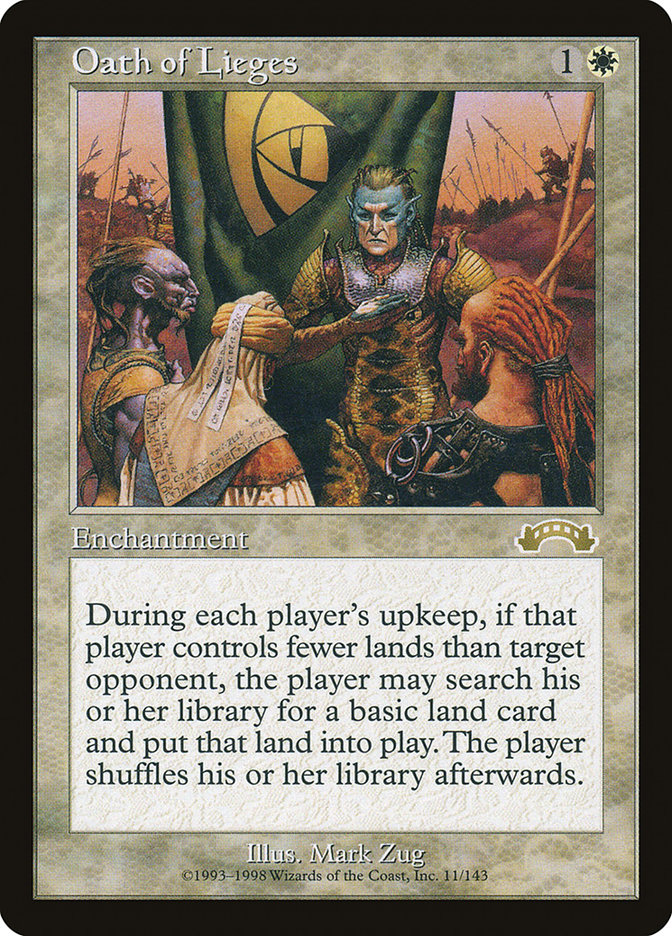

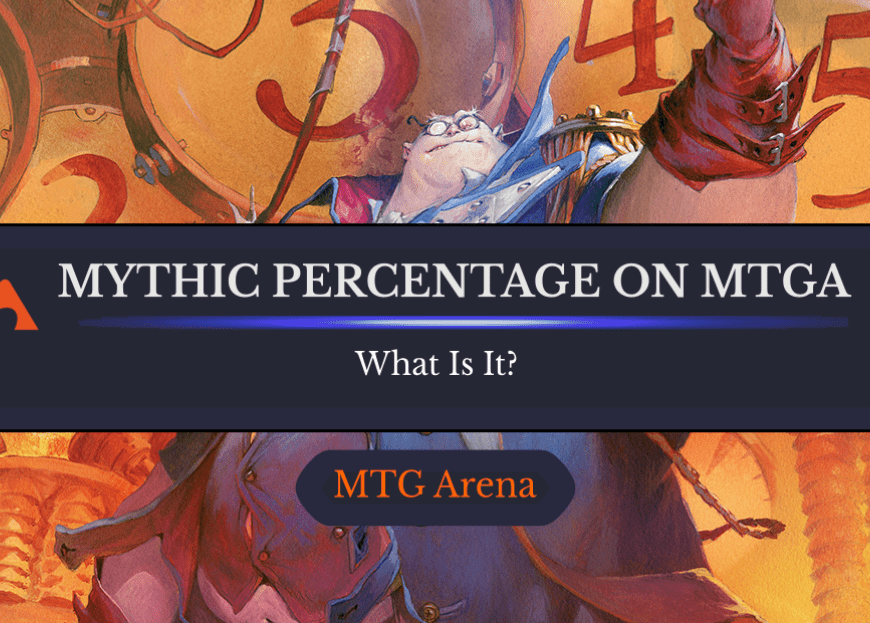
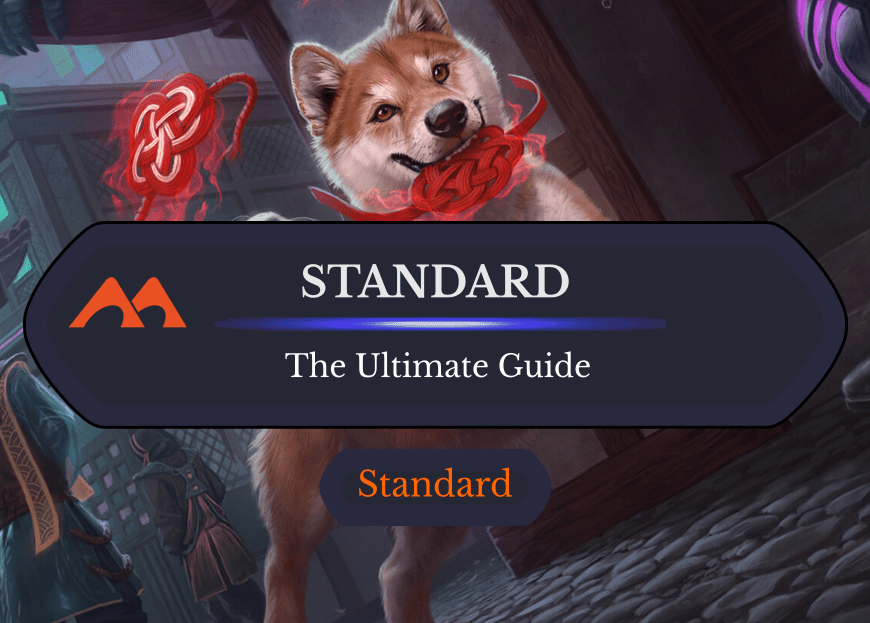
Add Comment